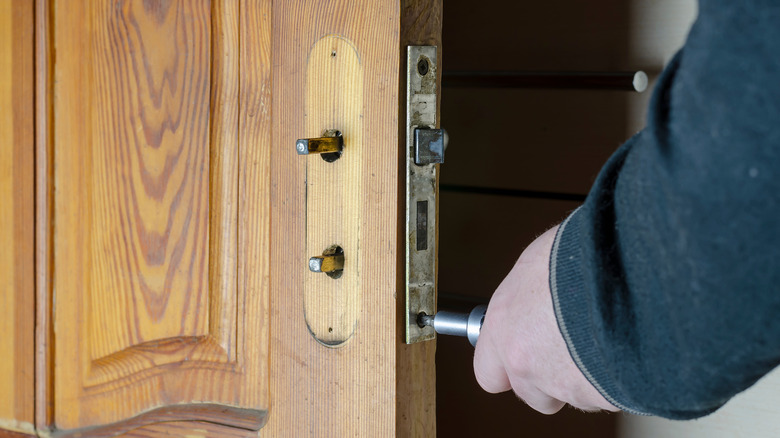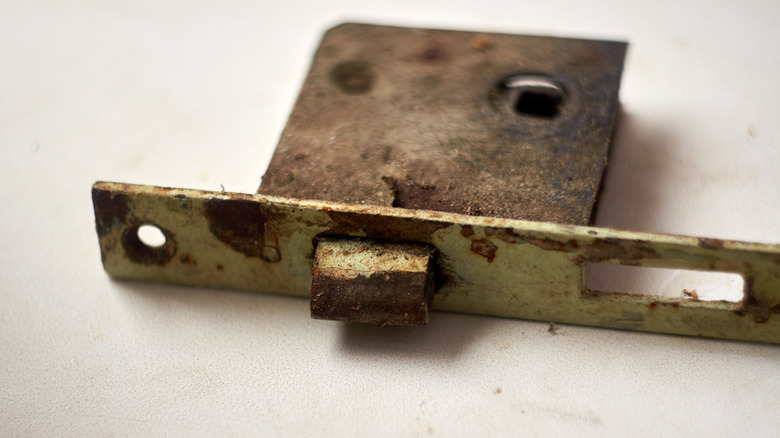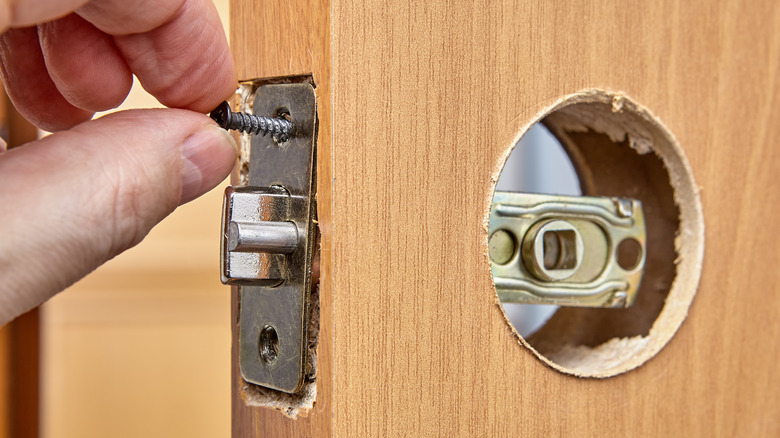How To Change An Old Mortise Lock For A Modern Cylindrical Lock
What is a traditional mortise door lock and do you have them in your home? Possibly. Found mostly in commercial buildings and old homes, mortise door locks have been a popular security choice for hundreds of years, according to Door Security Group. First patented in Britain in 1778, mortise locks are prized for their extreme reliability. However, nowadays they are not standard in residential use, meaning older homes can often benefit from an upgrade.
Mortise door locks received their name because the box that houses the complex internal workings and mechanisms resides in a recess or pocket carved out of the door. The door must be a minimum of 1.75 inches thick to accommodate the entire lockbox, says Door Security Group. With newly built homes, cylindrical locks are the most common and are typically installed by drilling a hole through the door and equipping each side with a knob or lever, whereas mortise locks remain the preferred choice for commercial spaces.
Why would you want to change a mortise lock?
Most mortise locks in homes are now very old and over time, they tend to rust, says United Locksmith. Rust can prevent the lock from working properly and even prevent it from working at all, but this problem can be remedied by disassembling the locking mechanism and removing the rust. Oxidation isn't the only issue that can occur with this style of lock. The spindle that holds the doorknobs may eventually need to be replaced to keep the knobs from loosening or falling off, says United Locksmith. And sometimes the key stops working, which is usually an issue with the lever or the cam (the internal parts of the locking mechanism).
Each of those issues can be resolved with a little help from a professional locksmith, but if a lock is seriously damaged, it may be best to change out the mortise locks for cylindrical ones. Just be aware that once the mortise lock set is removed, there will be a hole in the door where it was once housed. If you don't want to replace the entire door, then this hole needs to be repaired, says Door Dodo.
How to change from a mortise to standard cylinder lock
Before you begin, I Dig Hardware warns that this conversion –- specifically repairing the hole left by the removal of the mortise -– may compromise the safety of a fire door and should be considered if you decide to move forward with this project. Swapping your mortise lock set for a cylindrical one can be challenging and requires a range of woodworking tools. According to Door Dodo, a table saw, a miter, chisels, screwdrivers, a tape measure, and wood glue are needed. Begin by detaching all the faceplates with a screwdriver and then removing the screws that hold the lock mechanism in place. Next, measure the hole in the door left by the removed lockbox. Using the saw and miter, cut a wood block to the exact size necessary to fill the void, then secure it in place with glue.
The new lock can then be installed according to the instructions that come with the kit. According to The Home Depot, you'll need to measure the door thickness to ensure the new cylindrical lock fits properly. Once fully installed, any holes that remain from the old assembly can be filled and painted.


